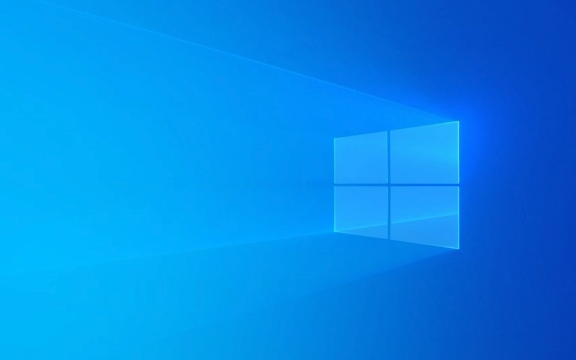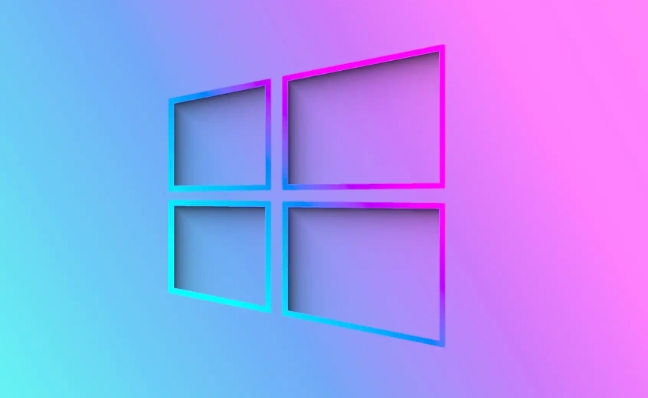Creating a system restore point is simple and important in Windows 10. 1. Open "System Properties" and create manually: search for "Create Restore Point", click "Create" after entering, enter, enter the name and confirm. 2. Set automatic creation: Create basic tasks through the "Task Scheduler", trigger frequency customization, and execute the command powershell.exe and save it regularly with parameters. 3. Use third-party tools: graphical tools such as RogueKiller, ReHIPS, and System Restore Manager to simplify operations. Be careful to ensure that the system protection function is turned on, otherwise it will not take effect. Whether it is manual or automatic, set up the restore point in advance to quickly recover when there is a problem with the system and avoid reinstalling the system.

Creating a system restore point in Windows 10 is actually very simple and very useful. In case there is a problem with the system, you can use it to quickly restore it to its previous normal state, saving you the trouble of reinstalling the system. As long as you are not using the most basic account permissions, you can easily set it up.

Open System Properties to create manually
This is the most direct way. Press Win S to search for "Create Restore Point", and then click to enter the "System Properties" window. Under the Protection tab, click the Create button, enter a descriptive name (such as "Backup before update"), and then click Create. The entire process may take several minutes, depending on your system file size and hard drive speed.

A few points to note:
- Make sure the system protection function is enabled.
- If you are using SSD, the system may turn off this function by default and need to be turned on manually.
- After the creation is completed, the system will prompt whether it is successful.
Set up automatic creation restore points
If you don't want to operate manually every time, you can set the system to automatically generate restore points regularly. The method is to create a basic task through the Task Scheduler:

- Open the Task Scheduler (searching for "Task Scheduler").
- On the right, select Create Basic Task.
- Set the trigger frequency, such as daily, weekly, or monthly.
- Select "Start Program" for action.
- Enter the command:
powershell.exe, the parameter is written:-Command "Checkpoint-Computer -Description 'Scheduled Restore Point' -RestorePointType 'MODIFY_SETTINGS'"
This will help you save the system status regularly, suitable for those who often toss the system.
Simplify the process using third-party tools
If you think the interface provided by the system is not intuitive enough, you can also use some third-party tools to manage the restore point. For example:
- RogueKiller : In addition to anti-virus, it also supports one-click creation of restore points.
- ReHIPS : Provides a graphical interface, making operation easier.
- System Restore Manager : specially used to manage restore points, with comprehensive functions.
These tools usually support one-click creation, deletion, recovery and other operations, which are suitable for friends who are not very familiar with the command line.
However, it should be noted that no matter what tool you use, the premise is that the system itself supports and enables the system restore function. Otherwise, even if the tool is used, it will not take effect.
Basically these are the methods. Whether it is manual or automatic, the key is to remember to prepare in advance and don’t wait until something goes wrong before remembering that there is no backup.
The above is the detailed content of How to create a restore point in Windows 10?. For more information, please follow other related articles on the PHP Chinese website!

Hot AI Tools

Undress AI Tool
Undress images for free

Undresser.AI Undress
AI-powered app for creating realistic nude photos

AI Clothes Remover
Online AI tool for removing clothes from photos.

Clothoff.io
AI clothes remover

Video Face Swap
Swap faces in any video effortlessly with our completely free AI face swap tool!

Hot Article

Hot Tools

Notepad++7.3.1
Easy-to-use and free code editor

SublimeText3 Chinese version
Chinese version, very easy to use

Zend Studio 13.0.1
Powerful PHP integrated development environment

Dreamweaver CS6
Visual web development tools

SublimeText3 Mac version
God-level code editing software (SublimeText3)
 How to Change Font Color on Desktop Icons (Windows 11)
Jul 07, 2025 pm 12:07 PM
How to Change Font Color on Desktop Icons (Windows 11)
Jul 07, 2025 pm 12:07 PM
If you're having trouble reading your desktop icons' text or simply want to personalize your desktop look, you may be looking for a way to change the font color on desktop icons in Windows 11. Unfortunately, Windows 11 doesn't offer an easy built-in
 Fixed Windows 11 Google Chrome not opening
Jul 08, 2025 pm 02:36 PM
Fixed Windows 11 Google Chrome not opening
Jul 08, 2025 pm 02:36 PM
Fixed Windows 11 Google Chrome not opening Google Chrome is the most popular browser right now, but even it sometimes requires help to open on Windows. Then follow the on-screen instructions to complete the process. After completing the above steps, launch Google Chrome again to see if it works properly now. 5. Delete Chrome User Profile If you are still having problems, it may be time to delete Chrome User Profile. This will delete all your personal information, so be sure to back up all relevant data. Typically, you delete the Chrome user profile through the browser itself. But given that you can't open it, here's another way: Turn on Windo
 How to fix second monitor not detected in Windows?
Jul 12, 2025 am 02:27 AM
How to fix second monitor not detected in Windows?
Jul 12, 2025 am 02:27 AM
When Windows cannot detect a second monitor, first check whether the physical connection is normal, including power supply, cable plug-in and interface compatibility, and try to replace the cable or adapter; secondly, update or reinstall the graphics card driver through the Device Manager, and roll back the driver version if necessary; then manually click "Detection" in the display settings to identify the monitor to confirm whether it is correctly identified by the system; finally check whether the monitor input source is switched to the corresponding interface, and confirm whether the graphics card output port connected to the cable is correct. Following the above steps to check in turn, most dual-screen recognition problems can usually be solved.
 Fixed the failure to upload files in Windows Google Chrome
Jul 08, 2025 pm 02:33 PM
Fixed the failure to upload files in Windows Google Chrome
Jul 08, 2025 pm 02:33 PM
Have problems uploading files in Google Chrome? This may be annoying, right? Whether you are attaching documents to emails, sharing images on social media, or submitting important files for work or school, a smooth file upload process is crucial. So, it can be frustrating if your file uploads continue to fail in Chrome on Windows PC. If you're not ready to give up your favorite browser, here are some tips for fixes that can't upload files on Windows Google Chrome 1. Start with Universal Repair Before we learn about any advanced troubleshooting tips, it's best to try some of the basic solutions mentioned below. Troubleshooting Internet connection issues: Internet connection
 Want to Build an Everyday Work Desktop? Get a Mini PC Instead
Jul 08, 2025 am 06:03 AM
Want to Build an Everyday Work Desktop? Get a Mini PC Instead
Jul 08, 2025 am 06:03 AM
Mini PCs have undergone
 How to clear the print queue in Windows?
Jul 11, 2025 am 02:19 AM
How to clear the print queue in Windows?
Jul 11, 2025 am 02:19 AM
When encountering the problem of printing task stuck, clearing the print queue and restarting the PrintSpooler service is an effective solution. First, open the "Device and Printer" interface to find the corresponding printer, right-click the task and select "Cancel" to clear a single task, or click "Cancel all documents" to clear the queue at one time; if the queue is inaccessible, press Win R to enter services.msc to open the service list, find "PrintSpooler" and stop it before starting the service. If necessary, you can manually delete the residual files under the C:\Windows\System32\spool\PRINTERS path to completely solve the problem.
 How to show file extensions in Windows 11 File Explorer?
Jul 08, 2025 am 02:40 AM
How to show file extensions in Windows 11 File Explorer?
Jul 08, 2025 am 02:40 AM
To display file extensions in Windows 11 File Explorer, you can follow the following steps: 1. Open any folder; 2. Click the "View" tab in the top menu bar; 3. Click the "Options" button in the upper right corner; 4. Switch to the "View" tab; 5. Uncheck "Hide extensions for known file types"; 6. Click "OK" to save settings. This setting helps identify file types, improve development efficiency, and troubleshoot problems. If you just want to view the extension temporarily, you can right-click the file and select "Rename" and press the Esc key to exit, and the system settings will not be changed.







